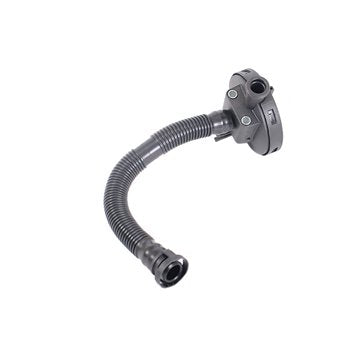How a Clp Engine Can Improve Effectiveness in Different Industries
The development of CLP engines notes a considerable shift in operational efficiency across numerous fields, driven by their capability to optimize fuel intake and minimize downtime. As organizations progressively focus on sustainability along with effectiveness, the duty of CLP engines becomes even much more important.
Introduction of CLP Engines
CLP engines, or Constant Liquid Propellant engines, stand for a substantial development in propulsion technology, particularly for area applications. These engines make use of a constant feed system that permits the continual expulsion of propellant, resulting in boosted effectiveness and efficiency contrasted to traditional solid or hybrid propulsion systems. By maintaining a consistent circulation of liquid propellant, CLP engines can attain a lot more specific thrust control, which is essential for navigating spacecraft in numerous goal scenarios.
The style of CLP engines incorporates advanced products and ingenious fuel management systems. clp engine. This causes reduced weight and increased dependability, crucial factors for long-duration space goals. The constant operation decreases the threat of burning instability, a common difficulty in traditional rocket engines.

Benefits in Production
The manufacturing of Continual Fluid Propellant (CLP) engines presents numerous noteworthy advantages that boost both performance and cost-effectiveness. One of the key benefits is the structured production process, which decreases the intricacy connected with typical propulsion systems. By utilizing fluid propellant, producers can attain greater precision in engine efficiency, causing optimized power result and minimized waste.
Additionally, CLP engines facilitate a higher level of modularity, permitting less complicated combination into various manufacturing lines. This flexibility can significantly decrease preparations and improve general functional flexibility. Using CLP technology likewise often tends to reduce the need for extensive maintenance because of less relocating parts, which translates right into minimized downtime and operational expenses.

Applications in Logistics
Leveraging Constant Liquid Propellant (CLP) engines in logistics offers substantial benefits in functional effectiveness and integrity. These engines provide a robust option for different transport demands, making it possible for the seamless motion of products across substantial distances. The fundamental layout of CLP engines enables regular power outcome, which converts into smoother and much more predictable transportation schedules.
One of the key applications of CLP engines in logistics remains in heavy-duty freight transport, where they can drive both ground and aerial vehicles. Their capacity to preserve high efficiency under differing tons conditions makes sure that shipment timelines are satisfied, thus boosting client complete satisfaction. Furthermore, CLP engines can be incorporated right into automated logistics systems, facilitating real-time tracking and optimizing route planning.
In addition, the resilience of CLP engines minimizes maintenance downtime, permitting logistics companies to optimize their operational capacities. This is especially helpful in warehousing procedures, where efficiency in dealing with and carrying goods is vital. As logistics remains to advance, the integration of CLP engines stands for a forward-thinking technique that not just boosts performance but also sustains the sector's expanding demands for reliability and rate.
Effect on Energy Performance
Exactly How do Continual Fluid Propellant (CLP) engines enhance energy efficiency in transportation? CLP engines make use of a regular flow of fluid fuel, optimizing burning procedures and keeping a secure thrust outcome. This style reduces power losses related to conventional combustion engines, where fuel shipment can differ and lead to inefficiencies.
The continuous procedure of CLP engines permits a much more efficient thermal cycle, leading to greater More Help specific impulse contrasted to conventional engines. clp engine. This equates to minimized fuel consumption for the same quantity of job done, significantly decreasing functional prices across numerous transportation markets, consisting of aviation and maritime industries
Additionally, the capability of CLP engines to keep optimum efficiency under varying lots problems minimizes the demand for frequent acceleration and slowdown, additionally boosting fuel efficiency. Boosted energy effectiveness not just adds to cost savings but additionally brings about reduce greenhouse gas exhausts, lining up with global sustainability goals.
Future Trends and Innovations
Arising innovations in Continual Fluid Propellant (CLP) engine technology assurance to revolutionize the landscape of transportation effectiveness and sustainability. As sectors pivot toward greener options, CLP engines stand at the forefront, incorporating innovative products and style methodologies that enhance performance while minimizing environmental impact.
Among the most promising trends is the fostering of crossbreed systems that integrate CLP engines with eco-friendly power sources. This harmony can optimize gas intake and lower emissions, lining up with worldwide sustainability objectives. Advancements in computational liquid dynamics (CFD) are assisting in the design of more aerodynamically reliable engines, leading to reduced drag and boosted gas performance.
Additionally, the advancement of clever monitoring systems is readied to boost functional efficiencies. These systems utilize information analytics and IoT innovation to optimize engine efficiency in real-time, making certain that the engines operate within their most effective specifications.
As study continues to discover alternate propellant formulas-- such as biofuels and artificial gas-- the future of CLP engines looks appealing. By harnessing these technologies, markets can not just boost their performance yet additionally contribute significantly to a cleaner, more lasting future in transport.
Verdict
In final thought, CLP engines represent a considerable advancement in performance throughout check multiple sectors. Their capability to optimize gas consumption and lower operational expenses, incorporated with a constant feed system, improves power outcome and like it operational integrity. The assimilation of innovative products and fewer relocating parts decreases maintenance needs, while positioning with sustainability goals settings CLP engines as a crucial innovation for the future. Proceeded innovation in this field promises more renovations in effectiveness and ecological performance.